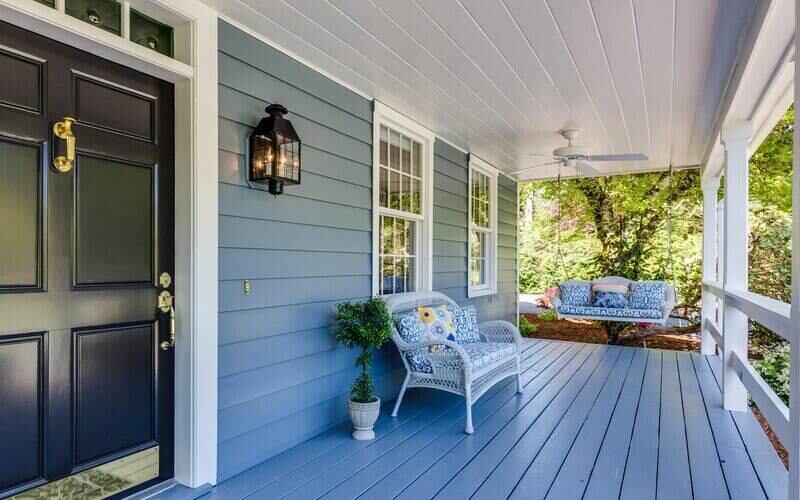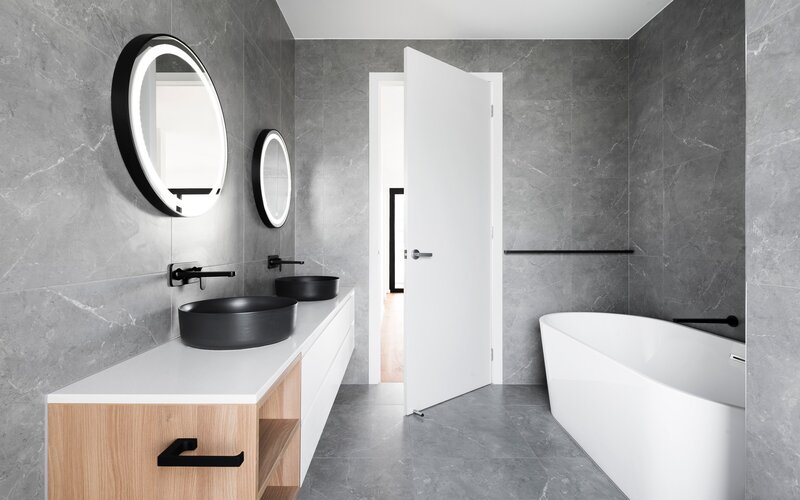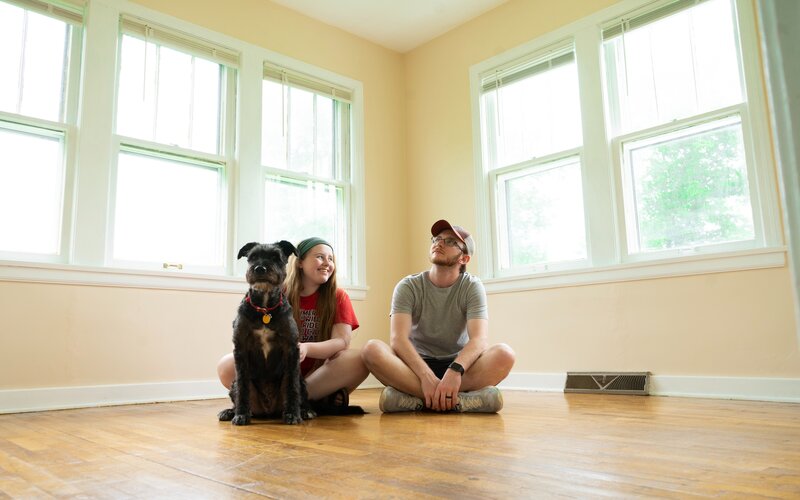PRD’s ‘Alternative Housing Supply Solutions’ report has revealed alternative and innovative housing supply solutions drawn from international case studies to address the key root of the housing crisis throughout Australia - housing undersupply.
At current, PRD outlines undersupply is being driven across Australia by a decline in building approvals, having fallen 21.8% since 2021 off the back of the end of HomeBuilder, alongside consecutive interest rate hikes, and building industry materials and labour shortages.
PRD Chief Economist Dr Asti Mardiasmo said now is the time to discuss real, practical solutions to addressing housing undersupply.
“We know the root of our housing crisis is undersupply,” Dr Mardiasmo said.
“The good news is we are not alone in this issue – there are many other countries who have or are currently experiencing this.”
Dr Mardiasmo believes Australia can draw upon solutions from other countries in alleviating housing undersupply, yet the challenge lies in implementing these within an Australian context.
"Our government system is such that each Government level has autonomy in their housing strategy," she said.
“Therefore unfortunately there is not just one ‘perfect’ solution, but it is more likely that we will need to have a multi-faceted solution with a combination of 2 or 3 solutions.”
1. Public Private Partnerships
PRD’s first of five solutions outlined are Public Private Partnerships, which requires agreements between a government body and a private partner - typically a private or not-for-profit company or entity.
These agreements enable the private partner to develop and fund services while using a public capital asset e.g. government owned land or building, with the end product accessible to the general public.
Looking towards Ireland’s Social Housing Bundles project as an example, PRD detailed such was initiated as part of the Federal Government’s social housing budget of €300 million ($466 million AUD) to build 1,500 housing units across multiple development sites. On completion of this project, social housing remained the ownership of local governments.
In assessing the suitability of Private Public Partnerships, PRD believes this solution has the potential to ease housing stress but will require active participation by the Government from all levels to identify suitable sites in urban areas and ensure the highest impact for the community is achieved.
2. Modular Homes
The second solution outlined by PRD are modular homes or as many Aussies know them as ‘tiny houses’. These homes are transportable dwellings that are prefabricated off-site and delivered to the location to be assembled on-site.
PRD notes the appeal of modular homes compared to traditional construction comes from their lower construction costs, increased sustainability, and faster turnaround time. This can be achieved all while still providing the benefits of a traditional home, like ownership, security and comfort.
For the implementation of modular homes to occur, PRD outlines joint ventures between multiple governments, manufacturers, contractors, and community housing organisations would be required as seen in 2017 in response to the United Kingdom’s housing crisis.
Further, an innovative contract could be initiated through either the utilisation of vacant government land or providing temporary housing for a key event such as the Brisbane Olympics 2032. This would then require the land underneath to be re-purposed upon completion of the event.
Speaking to Savings.com.au, PRD Chief Economist Dr Asti Mardiasmo said modular homes do not necessarily require residential zoning.
“This means if you have a piece of industrial or commercial land within say 10km of the CBD - and this is your definition of inner-city - technically you can have modular homes,” Dr Mardiasmo said.
“A good example is the planned Olympic Village in Hamilton for Brisbane 2032, which would still classify as inner-city, yet the latest information available details the State Government is not considering doing modular homes. Yet the land is there.”
The report echoed this sentiment, detailing that although modular homes have been utilised as an alternative to the traditional home for some time across the world, its potential as an alternative housing solution is currently not being implemented at its highest and best use.
Read more: Tiny Houses in Australia
3. Build-To-Rent
The third solution outlined by PRD is one that many Australians may already be familiar with, that being build-to-rent. Under this large-scale housing model, build-to-rent consists of purpose-built rental houses held and managed by a single ownership, typically being an institutional investor. This provides long-term viability for both the owner and occupants, due to their unique ownership structure.
When considering build-to-rent as a viable solution, PRD notes across modern Australia, families come in various shapes and sizes and have differing definitions of affordable housing. In order to be successful, build-to-rent housing must have a portion accessible to lower income households to maximise its impact.
Further, PRD outlines build-to-rent housing must also incorporate a larger portion to various household sizes to allow for residential longevity as they move through different life cycles. This addresses rental housing security, which is crucial in the current undersupplied rental market.
In Australia, LIV projects in Sydney’s Olympic Park created by Mirvac were the first of its kind in the country to offer build-to-rent, now expanding beyond the harbour city into Melbourne and Brisbane.
Another on the horizon is Vita in Brisbane’s Fortitude Valley, combining forces of institutional investors to build an affordable build-to-rent development targeting families, key workers and over-55s.
4. Asset Repurposing
The fourth solution outlined by PRD relies upon putting a new lease on life for many traditional office and retail buildings through asset repurposing. This would see vacant buildings re-modelled or reconfigured into another asset class, specifically a form of accommodation.
PRD details changes within the commercial property sector in the Australian market puts asset repurposing in a unique position of being a highly effective tool, given it can apply to a number of pre-existing infrastructure assets no longer in use.
Further, PRD notes the advantage of asset repurposing is the ability to reuse the current building structural framework, which can minimise costs and turn-around time. Asset repurposing can also minimise the time and effort needed to find urban land, which lends to its efficient delivery.
At a time when housing supply is at record lows, Dr Mardiasmo noted the only disadvantage of asset repurposing is the fact that those repurposing the asset may be limited in what they can provide.
“Repurposing an old government building might limit you to apartments, but at the end of the day it still adds to the housing supply count,” she said.
5. Community-Based Land Initiatives
The fifth and final solution outlined by PRD is community-based land initiatives. These initiatives are similar in their objectives, with the main goal being to provide affordable housing for the betterment of the community through consolidated land assets owned by the government.
Due to the structure of community-based land initiatives, their suitability as an alternative housing supply solution is reliant on the participation of the government at all levels - federal, state, and council.
The key to this solution, PRD notes, is unlocking land in consultation with targeted stakeholders, which has been effective in the likes of Germany, Denmark and Canada with targeted initiatives called Urban Wealth Funds, Land Rent Schemes or Community Land Trusts.
PRD revealed these initiatives targeted low-income individuals and families in need of affordable housing by consolidating land assets, offering access to subsidised government leased land to build a home and sharing ownership.
What projects are in the 2023 pipeline to create more housing supply?
|
No. |
Project |
State |
Type |
Estimated Value |
Commencement Date |
|
1 |
Northbourne Avenue - Braddon Place (602 Units) |
ACT |
Mixed use |
$158,182,000 |
06/10/2023 |
|
2 |
Dairy Road Fyshwick Redevelopment (1 Unit, 500 Dwellings) |
ACT |
Mixed use |
$98,000,000 |
19/08/2023 |
|
3 |
Wilton North Precinct (5,500 Units) |
NSW |
Mixed use |
$3,500,000,000 |
19/07/2023 |
|
4 |
Mitchell Rd & Ashmore St Residential Development - Park Sydney (1,400 Units) |
NSW |
Mixed use |
$636,739,000 |
16/11/2023 |
|
5 |
Burwood Place (1,041 Units) |
NSW |
Mixed use |
$602,020,000 |
21/08/2023 |
|
6 |
Parklands Darwin (4 Dwellings, 101 Units) |
NT |
Mixed use |
$800,000,000 |
17/07/2023 |
|
7 |
Lasseters Casino Redevelopment (235 Units) |
NT |
Mixed use |
$90,000,000 |
14/07/2023 |
|
8 |
North Harbour Marina Precinct (600 Units, 2,000 Dwellings) |
QLD |
Mixed use |
$2,740,000,000 |
16/10/2023 |
|
9 |
La Pelago - St Regis Gold Coast Resort – Aquia (889 Units) |
QLD |
Mixed use |
$1,250,000,000 |
08/05/2023 |
|
10 |
Pacificus Tourism Project Hummock Hill Island (2,800 Units) |
QLD |
Mixed use |
$1,000,000,000 |
17/12/2023 |
|
11 |
Former Brompton Gasworks Site Bowden Redevelopment Project (427 Units, 207 Townhouses, 200 Dwellings) |
SA |
Mixed use |
$459,000,000 |
11/12/2023 |
|
12 |
Le Cornu Mixed Use Development (199 Units, 106 Townhouses) |
SA |
Mixed use |
$250,000,000 |
20/11/2023 |
|
13 |
Cadbury Road Windermere Bay Precinct (316 Units, 315 Townhouses) |
TAS |
Mixed use |
$200,000,000 |
06/11/2023 |
|
14 |
Devonport Showgrounds Residential Development (200 Lots) |
TAS |
Residential |
$75,000,000 |
24/07/2023 |
|
15 |
Melbourne Square /Hilton Hotel Mixed Use Development 1,677 Units) |
VIC |
Mixed use |
$1,000,000,000 |
07/06/2023 |
|
16 |
West Melbourne Waterfront Development Plan (573 Units) |
VIC |
Mixed use |
$600,000,000 |
06/06/2023 |
|
17 |
Alphington Paper Mill Site Mixed Use Residential Development (601 Units) |
VIC |
Mixed use |
$500,000,000 |
29/05/2023 |
|
18 |
Ocean Reef Marina Mixed Use Development (840 Units, 840 Lots) |
WA |
Mixed use |
$800,000,000 |
08/12/2023 |
|
19 |
C6 - South Perth (245 Units) |
WA |
Residential |
$350,000,000 |
18/09/2023 |
|
20 |
97-105 Stirling Highway Towers (368 Units) |
WA |
Mixed use |
$320,000,000 |
07/08/2023 |
Advertisement
Buying a home or looking to refinance? The table below features home loans with some of the lowest interest rates on the market for owner occupiers.
| Lender | Home Loan | Interest Rate | Comparison Rate* | Monthly Repayment | Repayment type | Rate Type | Offset | Redraw | Ongoing Fees | Upfront Fees | Max LVR | Lump Sum Repayment | Extra Repayments | Split Loan Option | Tags | Features | Link | Compare | Promoted Product | Disclosure |
|---|---|---|---|---|---|---|---|---|---|---|---|---|---|---|---|---|---|---|---|---|
5.54% p.a. | 5.58% p.a. | $2,852 | Principal & Interest | Variable | $0 | $530 | 90% |
| Promoted | Disclosure | ||||||||||
5.49% p.a. | 5.40% p.a. | $2,836 | Principal & Interest | Variable | $0 | $0 | 80% |
| Promoted | Disclosure | ||||||||||
5.64% p.a. | 5.89% p.a. | $2,883 | Principal & Interest | Variable | $250 | $250 | 60% |
| Promoted | Disclosure | ||||||||||
5.64% p.a. | 5.89% p.a. | $2,883 | Principal & Interest | Variable | $248 | $350 | 60% |
| Disclosure |
Image by Mike Czetti via Pexels

Ready, Set, Buy!
Learn everything you need to know about buying property – from choosing the right property and home loan, to the purchasing process, tips to save money and more!
With bonus Q&A sheet and Crossword!







 Denise Raward
Denise Raward
 Harry O'Sullivan
Harry O'Sullivan

 Rachel Horan
Rachel Horan


